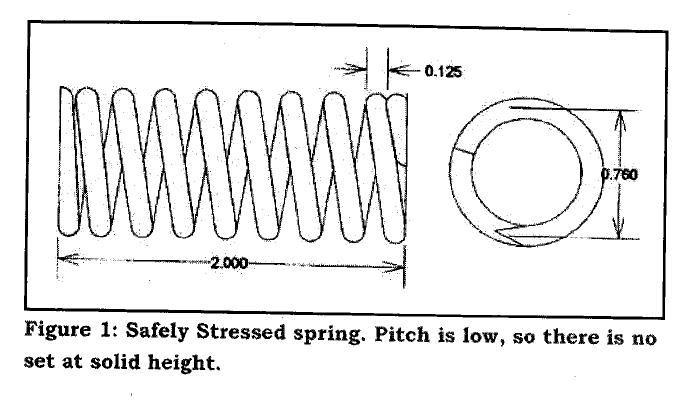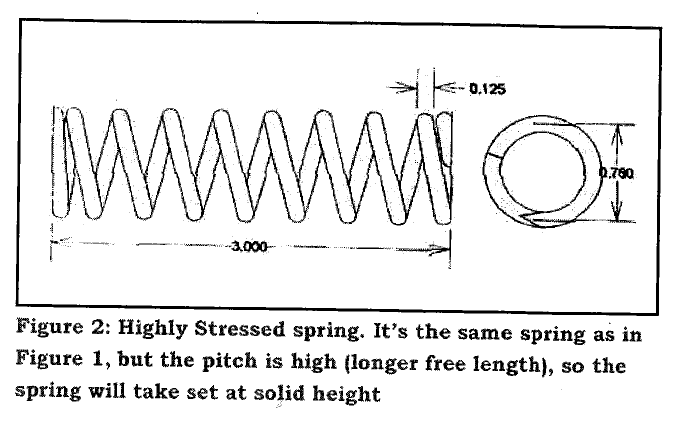However, all spring steels do have one thing in common: They can all reach a point, with a high-pitched design, where the elastic limit of the material has been exceeded and the spring cannot rebound to its original dimensions.
Here’s a simple example: Take a long, straight piece of spring steel and hold it at both ends. If you bend the wire and release, it will likely go right back to a straight piece of wire. This is because spring steel is formulated to have special properties that allow it to bend (deflect) and return to its original form. This example, in itself, is a definition of something elastic – something that can stretch and return to its previous shape.
However, if you’re strong enough, you can bend and bend and bend until you reach a point where the steel will not return to a straight length, but stays permanently bent. This means that you’ve exceeded the limit of the material to hold its structure and it, literally, stretched. The deformation is permanent once you reach that point; there is no going back.
A spring can have the same result. Take a compression spring and measure the free length. Then, by any given safe method, press the spring all the way to its solid height – as far as it can go. Release the spring back to its free length, and measure the free length again. If the free length did not change, you did not reach the “set limit” of the material. The material was not over-stressed during its trip to solid height and back. It remains true to its shape and remains elastic. If, however, the free length has become shorter, you have reached the “set limit” and the spring will always be shorter than it was before the press. The “set limit” is the point of deflection (created by the force/load applied) which creates a stress that the material cannot endure, without a permanent change. (Note: The terms “press” and “set” are interchangeable, though most U.S. spring makers use the term “set.”)
Many customers want to be sure the set potential is removed from their parts. It is common to have springs that operate in an application where the spring will be over stressed at a given height, and changes to the application cannot be made to allow a lower stressed design. Sometimes, springs are purposely designed to take a set because a pressed spring may have more cycle life (more back and forth movements before breakage).
There is a limit, however. If a coiling operator makes a spring longer and longer, and just increases the pitch, this may cause more problems. Increasing pitch and not making any other changes will increase the overall stress levels of the spring when it’s deflected. Simply translated, the spring will take more set than the previous sample and you start defeating the purpose. Making a spring longer to obtain a proper free length after set can only be done within a certain window of movement.
After that window has been exceeded, the spring will start to take more and more set, and require multiple pressings to remove the set. Stress levels that produce this level of set should be avoided. A very highly stressed spring should only be designed if the spring travels a short distance. Pressing to solid height should be completely avoided to eliminate the potential of extreme free height loss, and the associated loss of load.
So, pressing is required when the spring will take permanent set and the customer requires the set removed before being shipped to them. Some customers will set the spring when they assemble the spring in the application. If the free length can be increased slightly to compensate for the set, the pressing step can be eliminated. This is a win-win for the customer and the spring maker; the customer benefits by not paying the extra cost of the pressing step, and the spring maker benefits from the time not needed to press the whole spring order. Although this is not common practice on high-precision springs, it is a common scenario in the spring business and keeps costs lower, for both parties.


Call Toll Free 800.424.0244, use the Contact form, or Request a quote.
By: Randy DeFord, Engineering Manager Mid-West Spring & Stamping
